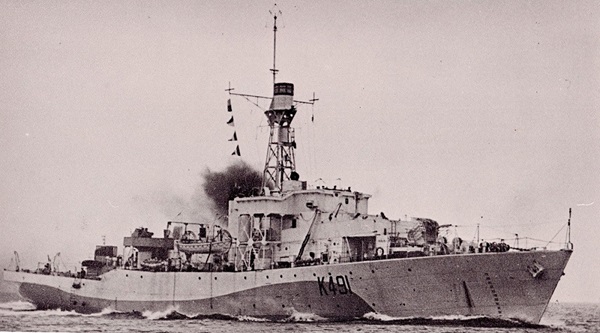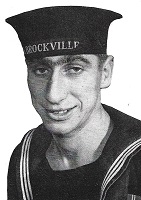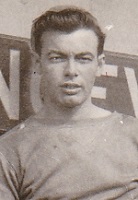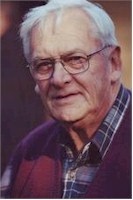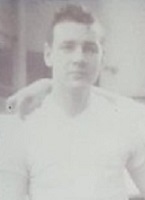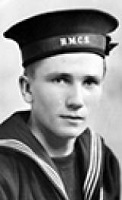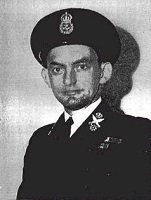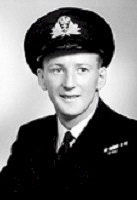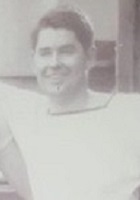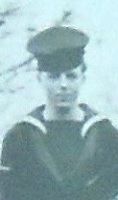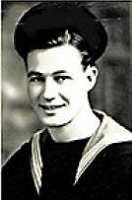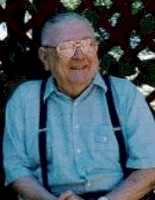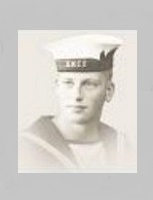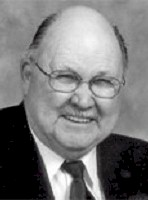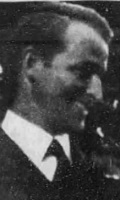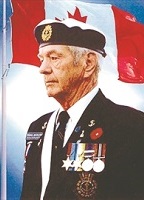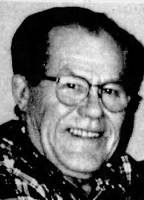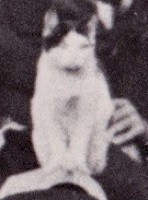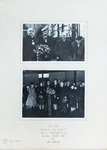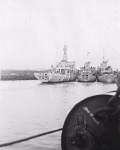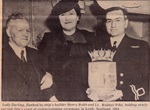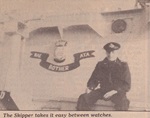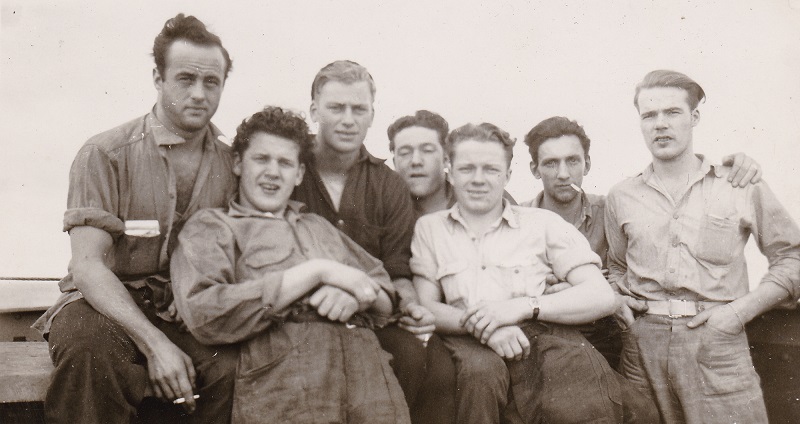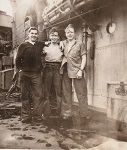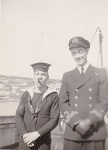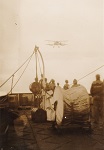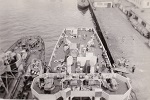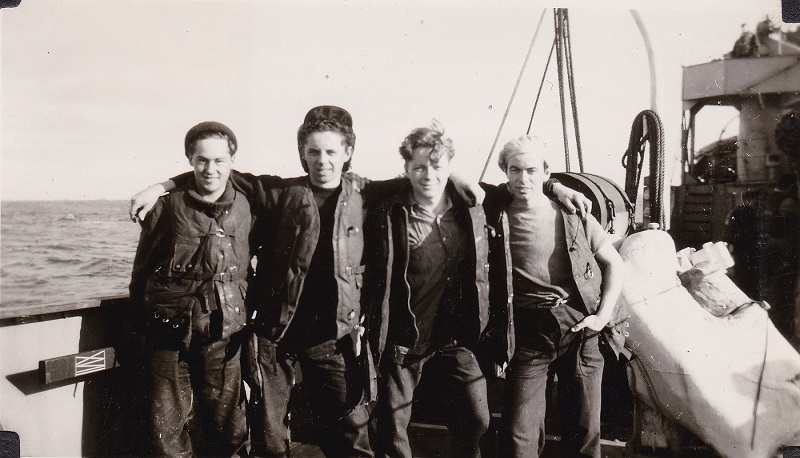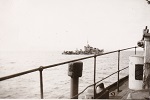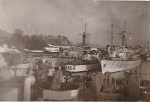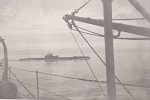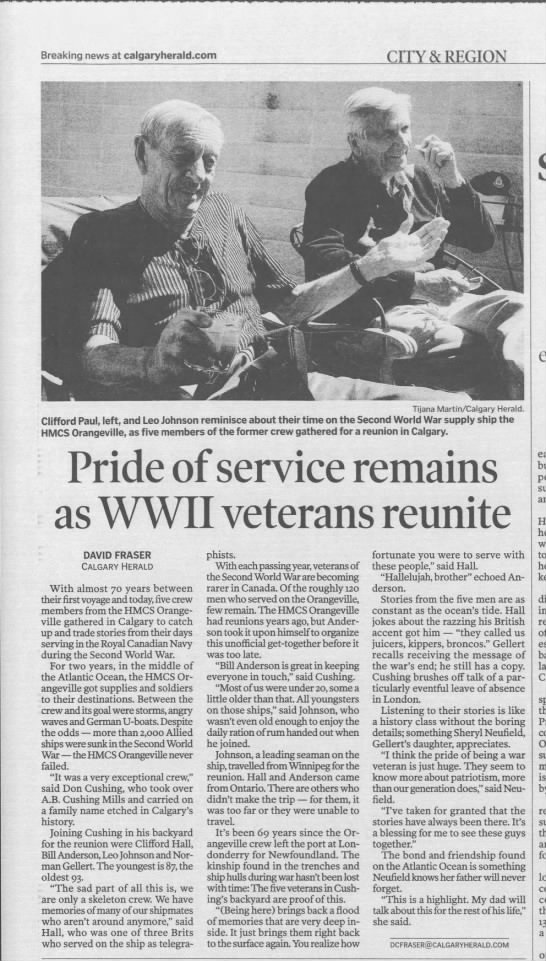|
HMCS ORANGEVILLE K491
Castle Class Corvette
Laid down and launched as HMS HEDINGHAM CASTLE, she was transferred to the RCN and commissioned at Leith on 24 Apr 1944 as HMCS ORANGEVILLE K491. After working up at Tobermory in May she joined EG C-1 at Londonderry, leaving on 04 Jun 1944 to meet ONS.239, her first convoy. She spent the remainder of the war on North Atlantic convoy duty, leaving 'Derry for the last time on 21 Apr 1945, to escort ONS.48. After refitting at Liverpool, N.S., from May to Aug 1945, ORANGEVILLE was placed in maintenance reserve at Halifax and finally paid off on 12 Apr 1946. She was sold later that year for conversion to mercantile use under the Chinese flag and renamed Ta Tung. In 1951 she was taken over the the Nationalist Chinese government, rearmed and renamed Te-An.
Photos and Documents Ship's company photos
Convoys escorted during the Second World War
Commanding Officers
They shall not be forgotten
Former Crew Members
(CC) = Commissioning Crew 24 Apr 1944 // (SC1) = Ship's company photo, Londonderry, Ireland between Feb and Jul 1945
Photos and Documents
(ORN001) Dignitaries at the launching of HMCS ORANGEVILLE at the Leigh Shipyards, Scotland // Top photo: Lady Darling (2nd from left), with shipbuilder Henry Robb (2nd from right) // From the collection of Donald Muir. Donald was a carpentry foreman at the Leith Shipyard when ORANGEVILLE was built. // Courtesy of Fiona Bremner (ORN002) Christmas Day 1944 at sea on HMCS ORANGEVILLE - Cooks Mike Guerin (left) and Ivan McCabe // Courtesy of John Hawley (ORN003) HMCS ORANGEVILLE K491, HMCS BITTERSWEET K182 and HMCS KAMLOOPS K176 // Photo taken from HMCS BROCKVILLE J270 // From the collection of Sylvio Fournier // Courtesy of Steve Fournier
(AA02) Commissioning 1944 Leith, Scotland. Photo Caption reads: " Lady Darling, flanked by ship's builder Henry Robb and Lt. Rodney Pike, Holding newly carved ship's crest at commissioning ceremony in Leith, Scotland, 1944", Photo taken from the supplement to the ORANGEVILLE Citizen of June 8th, 1988 celebrating the Ship' Crew 1988 Reunion. (AA03) The Skipper takes it easy between watches // Photo taken from June 1988 HMCS ORANGEVILLE reunion newspaper- a supplement to the ORANGEVILLE Citizen of June 8th, 1988 (AA04) Ship's Mascot - PING the cat // Photo taken from the supplement to the ORANGEVILLE Citizen of June 8th, 1988. celebrating the Ship' Crew 1988 Reunion. Photo originally came from photo of ship's crew taken at Londonderry and in the arms of Bob Edwards according to that photo's photo key (AA05) O/S Leighton Cornelius, son of Mr. and Mrs. Alvin Cornelius, East Garafraxa, formerly of ORANGEVILLE, who is serving aboard the corvette HMCS ORANGEVILLE. O/S Cornelius, 18 years old, joined the RCN on July 10, 1944 , trained at HMCS York, Toronto and Cornwallis Nova Scotia, was transferred to HMCS Avalon, St. John;s Newfoundland, and subsequently to the ORANGEVILLE." (AA06) A Commemorative Copy of "Etchings in Salt" April 1945 From the collection of Albert William Abercrombie, ERA 4c, RCNVR Courtesy of Bill Abercrombie
(TC04) Ken Tuckey (left), unknown and Tom Coyle (right) (TC05) Tom Coyle (left) - and 2 unknown friends (TC06) Ken Tuckey (TC07) "Jeep" Smith
(TC08) Tom Coyle (left) and Al Cambridge on HMCS ORANGEVILLE K491 (TC09) Tom Coyle on HMCS ORANGEVILLE K491 (TC10) Ken Tuckey and unknown shipmate on HMCS ORANGEVILLE K491 (TC11) Tom Coyle (left) and Ken Tuckey on HMCS ORANGEVILLE K491 (TC12) Ken Tuckey (left) and Tom Coyle on HMCS ORANGEVILLE K491
(TC13) (TC13) "Off Watch Black Gang"
(TC14) "3 Peggies" - L-R: unknown, Tom Coyle and Ken Tuckey (TC15) "Spud Party" - Tom Coyle peeling potatoes on HMCS ORANGEVILLE K491 (TC16) Ken Tuckey (right) and unknown shipmate on HMCS ORANGEVILLE K491 (TC17) Unknown CPO on the helm of HMCS ORANGEVILLE K491 (TC18) "Al and Bates - a couple of good heads" (note: Bates is Lt George Bate, HMCS ORANGEVILLE'S doctor)
(TC19) Crew looking at bi-plane as it flies past HMCS ORANGEVILLE K491 (TC20) Bridge, gun deck and fo'c's'le of HMCS ORANGEVILLE K491. HMCS AMHERST K148 and HMCS PORT HOPE J280 tied up forward of her (TC21) After gun tubs and quarterdeck of HMCS ORANGEVILLE K491. Unknown Flower Class corvette outboard (TC22) HMCS ORANGEVILLE K491
TC23 (TC23) "Four of Little Navy" L-R: unknown, unknown, Ken Tuckey and Tom Coyle
(TC24) HMCS CHAMBLY K116 (TC25) HMCS CHEBOGUE K317 with her stern block off after being hit by an acoustic torpedo. Photo taken from HMCS CHAMBLY K116 as she was preparing to tow HMCS CHEBOGUE K317 (TC26) HMCS NEW GLASGOW K320 (TC27) HMCS FRONTENAC K335 (TC28) HMCS ARNPRIOR K494
(TC29) HMCS HESPELER K489 arriving at St. John's, NFLD (TC30) Ships in Derry. HMS BRAITHWAITE K468 and HMS LOCH DUNVEGAN K425 tied up astern of HMCS ORANGEVILLE K491 (TC31) Canadian ships in Derry (TC32) HMS/m P252 - HMS SUPREME (TC33) "Russian sub-chasers in Newfi" - Soviet sub-chasers SC1491 and SC1478
Historical note: (1) HMS Supreme was built by Cammell Laird and launched on 24 February 1944. So far she has been the only ship of the Royal Navy to bear the name Supreme. She survived the Second World War, spending most of it in the Pacific Far East, where she sank thirteen Japanese sailing vessels, six Japanese coasters, a Japanese tug and a barge, and a small unidentified Japanese vessel. Supreme also attacked what is thought to be a Japanese auxiliary patrol vessel.[4] Supreme was eventually paid off and broken up at Troon in July 1950.
Historical Note: (2) SC-1478 and SC-1491 were USN sub-chasers. They were transferred to the USSR 02 Sep 1944 and 30 Aug 1944 respectively
(TC34) HMCS ORANGEVILLE K491 conducting "Forward Sweep in Convoy" (TC35) MS GRIPSHOLM
Historical note: (3) MS Gripsholm was an ocean liner, built in 1924 by Armstrong Whitworth in Newcastle-upon-Tyne, England, for the Swedish American Line for use in the Gothenburg-New York City run. She was of great historical importance as the first ship built for transatlantic express service as a diesel-powered motor vessel, rather than as a steamship. From 1942 to 1946, the United States Department of State chartered Gripsholm as an exchange and repatriation ship, carrying Japanese and German nationals to exchange points where she then picked up US and Canadian citizens (and British married to Americans or Canadians) to bring home to the USA and Canada. In this service she sailed under the auspices of the International Red Cross, with a Swedish captain and crew. The ship made 12 round trips, carrying a total of 27,712 repatriates. Exchanges took place at neutral ports; at Lourenšo Marques (now Maputo) in Mozambique or Mormugoa (now Goa) in Portuguese India with the Japanese, and Stockholm or Lisbon with the Germans. After the war, Gripsholm was used to deport inmates of US prisons to Italy and Greece.
From the collection of Tom Coyle, Sto 1c, RCNVR
Courtesy of Elaine Desnoyers
Clifford Hall, Bill Anderson, Leo Johnson and Norman Gellert join Don Cushing in his backyard for a reunion of ORANGEVILLE'S crew
Convoys escorted during the Second World War
|


